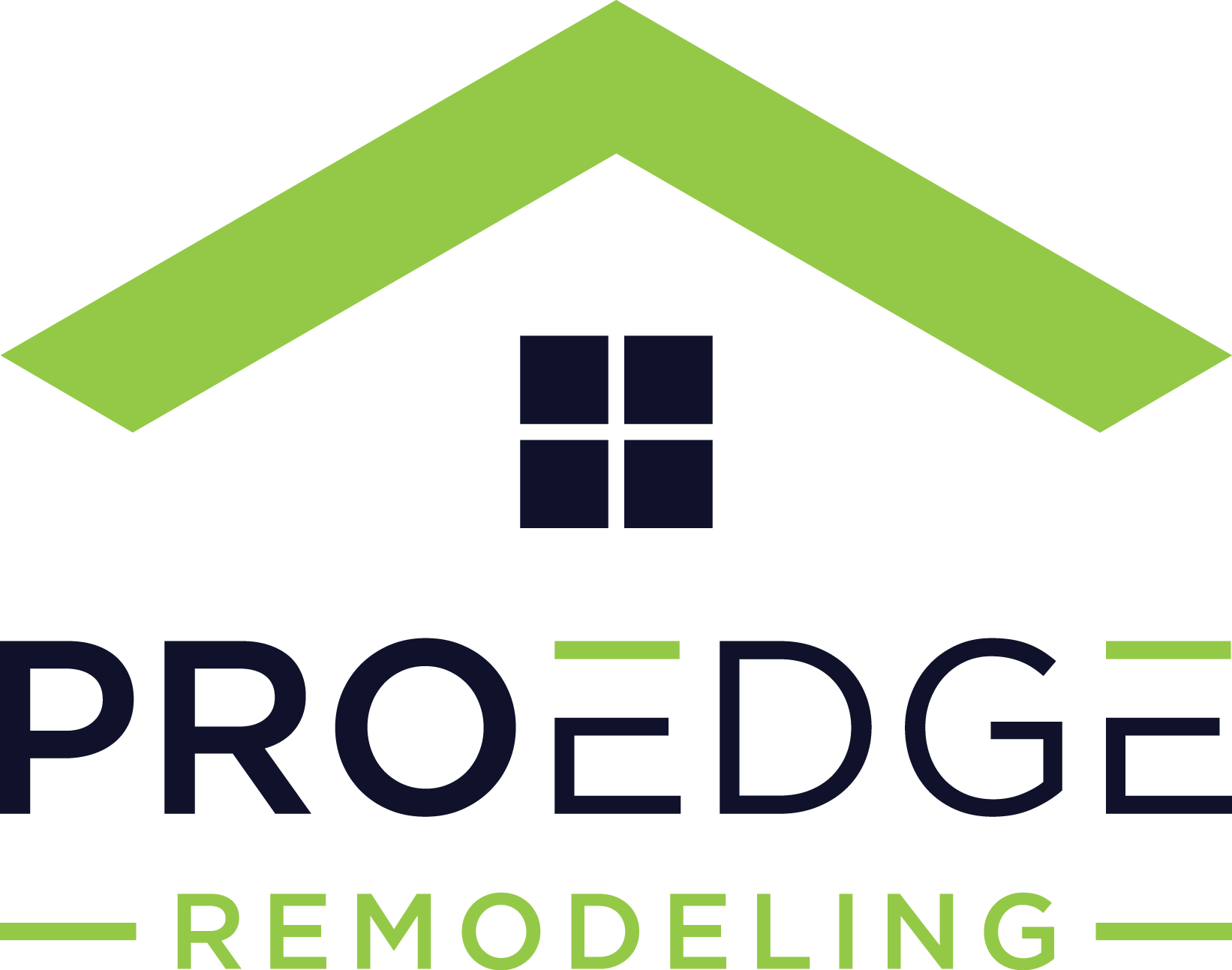Composite Deck vs Wood Deck: Which Is Best?

Decks have evolved from basic wooden platforms into essential outdoor living spaces, and the materials used to build them have changed dramatically over time. Pressure-treated lumber, which revolutionized deck building in the 1970s, now shares the market with engineered composite materials that emerged in the 1990s and have steadily improved in performance and appearance.
One of the most important decisions you’ll face when planning a new deck is choosing between these two leading materials. This choice affects virtually every aspect of deck ownership—from your initial investment to the decades of maintenance and enjoyment that follow.
The material you select directly impacts:
- Your upfront and long-term costs
- How much maintenance your deck will require
- How long your deck will last before needing replacement
- How your deck looks and feels underfoot
- The complexity and timeline of installation
Traditional wood offers natural beauty but typically demands regular upkeep. Composite materials generally require a higher initial investment but promise significantly reduced maintenance.
By understanding the full implications of each option, you can ensure your deck meets both your immediate expectations and long-term goals, creating an outdoor space that enhances your lifestyle for years to come.
Table of Contents
What Is a Wood Deck?
Wood decks have long been the traditional choice for outdoor spaces. They’re made from natural timber and offer a warm, classic appearance that’s hard to replicate.
Overview of Materials
Wood decks can be built from a variety of species, each with its own advantages:
- Pressure-treated pine ($3-7 per sq ft) is the most common option because it’s affordable and treated to resist rot and insects.
- Cedar and redwood ($8-12 per sq ft) provide better durability and a more refined appearance with natural oils that resist decay.
- Tropical hardwoods like ipe or mahogany ($12-15+ per sq ft) offer exceptional longevity and rich color at a higher price point.
Natural Look and Feel
The primary appeal of wood decking is its authenticity. No two boards are exactly alike, and the natural grain, texture, and scent give wood a character unmatched by synthetic alternatives. Wood also develops a beautiful patina over time, aging gracefully when properly maintained.
Common Finishes and Stains
Wood is highly customizable. It can be stained in various shades to match your home or left to weather naturally. Popular stain brands like Olympic, Behr, and Thompson’s WaterSeal offer dozens of color options. Regular sealing helps preserve color and protect the surface from UV damage and moisture.
What Is a Composite Deck?
Composite decking is an engineered alternative designed to mimic the look of wood without requiring the same level of upkeep. It has become increasingly popular for homeowners seeking a more hands-off solution.
Made from Recycled Wood Fibers and Plastic
Composite boards are manufactured using a blend of recycled plastic and wood fibers. This combination creates a dense, durable board that resists many of the problems associated with traditional wood. Leading brands include Trex, TimberTech, Fiberon, and AZEK, each with their own proprietary formulations.
Types of Composite Decking
Modern composite decking comes in several variations:
- Traditional composite (first generation) is more susceptible to staining and fading
- Capped composite (newest technology) features a protective polymer shell that enhances durability and stain resistance
- PVC decking is a fully synthetic option with no wood content, offering maximum moisture resistance
Low-Maintenance, Modern Alternative
Once installed, composite decking requires very little attention. There’s no need for staining, sealing, or painting. Most homeowners only need to clean the surface occasionally with soap and water to keep it looking new. Unlike wood, composite maintains a consistent appearance over time rather than developing a patina.
Available Colors, Textures, and Finishes
Manufacturers offer a wide range of styles, from colors that mimic natural wood tones to bold, modern hues. Surface textures are designed to resemble wood grain while offering consistency from board to board. Some premium lines even include subtle color variations to better mimic natural wood.
Cost Comparison
When budgeting for a deck, both upfront cost and long-term expenses should be considered. While wood generally costs less at the beginning, composite decking can offer better value over time.
Upfront Costs: Wood vs. Composite
- Pressure-treated wood typically ranges from $3 to $7 per square foot
- Cedar and redwood range from $8 to $12 per square foot
- Exotic hardwoods like ipe can cost $12 to $15+ per square foot
- Standard composite decking usually starts around $8 per square foot
- Premium composite and PVC options range from $12 to $30 per square foot
Note: Regional pricing can vary significantly. Northeast and West Coast markets typically see prices 10-20% higher than the national average, while some Southern and Midwestern regions may have prices 5-15% lower.
Installation Costs
Professional installation typically adds:
- $7-15 per square foot for wood decking
- $9-20 per square foot for composite decking
DIY installation can save substantially on labor costs, though composite requires more precise installation and may be less forgiving for novice builders.
Long-Term Value and ROI
Although composite costs more upfront, it often proves more economical over the life of the deck due to lower maintenance and fewer repairs. Some composite decks may also increase a home’s resale value due to their durability and modern look.
According to real estate professionals, low-maintenance features like composite decking can be a significant selling point, especially in high-end homes or vacation properties.
Cost-Saving Strategies
To maximize your budget:
- Consider a wood substructure with composite decking on top
- Look for end-of-season sales (fall and winter)
- Check with manufacturers about seconds or slightly imperfect stock
- Many home improvement stores offer financing options for larger projects
Durability and Lifespan
A deck is a long-term investment, so its ability to stand up to wear and weather is essential. Durability varies widely between wood and composite materials.
Resistance to Weather, Insects, and Rot
Wood is naturally vulnerable to moisture, sunlight, and pests unless treated and maintained regularly. Even pressure-treated lumber can warp, crack, and fade when exposed to harsh elements. Composite decking is engineered to resist these elements, making it a more reliable choice in harsh climates.
UV Resistance and Fading
All outdoor materials face sun exposure:
- Wood will naturally silver over time unless regularly stained
- First-generation composites were prone to fading
- Modern capped composites maintain their color much longer with specialized UV inhibitors
Performance in Extreme Climates
In regions with freeze/thaw cycles, wood tends to expand and contract more dramatically, which can loosen fasteners and create warping. Composite generally handles temperature fluctuations with less structural impact, although it can become quite hot in direct sunlight—sometimes 20-30°F hotter than wood in identical conditions.
How Long Each Material Typically Lasts
A well-maintained wood deck can last around 10 to 20 years, with tropical hardwoods reaching the upper end of that range. Composite decks often last 25 to 50 years, especially when made with high-quality materials and installed properly.
Weight-Bearing Capacity
Both materials offer good structural support when properly installed, but wood generally allows for wider joist spacing (16-24 inches) compared to most composite installations (12-16 inches), which require more supporting structure.
Warranty Considerations
Composite decking usually comes with longer and more comprehensive warranties than wood:
- Most premium composite brands offer 25-50 year limited warranties
- Some include coverage for fading, staining, and structural issues
- Wood decking warranties, if offered, typically cover defects for only 1-5 years
Maintenance Requirements
Upkeep plays a major role in the long-term experience of owning a deck. Some homeowners don’t mind seasonal maintenance, while others prefer a low-effort option.
Wood: Seasonal Maintenance Calendar
A typical wood deck maintenance schedule includes:
Spring:
- Inspection for winter damage
- Power washing or cleaning with appropriate wood cleaner
- Repair of any loose boards or popped nails
Summer:
- Spot cleaning as needed
- Checking for insect activity
Fall:
- Clearing debris from between boards
- Checking for moisture-related issues
Every 1-3 Years:
- Sanding weathered areas
- Applying new stain/sealer coat
- Replacing damaged boards
Composite: Occasional Cleaning Only
Composite decking needs far less attention. Most maintenance consists of:
- Simple cleaning once or twice a year to remove dirt, debris, and mildew
- Spot cleaning spills promptly (especially for older composite products)
- Using specialized composite cleaners for stubborn stains (brands like Corte Clean, Thompson’s WaterSeal Deck Cleaner, or Simple Green Deck Cleaner)
Stain Resistance Comparison
- Untreated wood absorbs stains readily from food, beverages, and natural elements
- Even treated wood can be difficult to clean once stained
- Newer capped composite products have excellent stain resistance, though older composite products may absorb stains from grease or red wine
Time and Effort Involved for Upkeep
Maintaining a wood deck can require a full weekend each year for cleaning and sealing, plus additional time for repairs as needed. This can amount to 20-30 hours of annual maintenance. Composite decking reduces this workload significantly to just 2-4 hours per year, freeing up your time for enjoying the deck rather than maintaining it.
Professional Maintenance Services
For those who prefer to outsource maintenance:
- Professional wood deck refinishing costs $700-1,200 for an average-sized deck
- Professional composite deck cleaning services typically cost $200-400
- Wood deck restoration (for neglected decks) can cost $2,000+ depending on damage
Appearance and Style Options
A deck’s appearance can make or break the overall look of an outdoor space. Both wood and composite offer attractive finishes, but they differ in consistency and customization.
Wood: Natural Grain, Customizable with Stains and Paints
The appeal of wood lies in its unique grain patterns and natural warmth. Homeowners can apply different stains or paints to match specific color palettes or home styles, though these finishes may fade over time without proper maintenance. Wood also ages naturally, developing character over years of use.
Composite: Variety of Colors and Finishes, Consistent Look
Composite decking offers a uniform appearance from board to board, ideal for modern or minimalist aesthetics. Available in a wide range of colors and wood-look finishes, it allows for design flexibility without the need for re-staining.
Current Design Trends
Popular deck designs in 2025 include:
- Mixed materials (composite frame with wood accent borders)
- Board width variations (wide boards for main areas, narrow for borders)
- Contrasting colors for borders and inlays
- Diagonal and herringbone patterns for visual interest
Which Fits Better with Different Home Styles
- Wood complements: Craftsman, rustic, traditional, cottage, farmhouse, and historic homes
- Composite complements: Contemporary, coastal, modern, transitional, and urban designs
That said, with the range of options available today, either material can be tailored to suit nearly any style. Design flexibility is more about color and installation pattern than the base material itself.
Environmental Impact
Sustainability is an important factor for many homeowners. Both wood and composite can be environmentally responsible, depending on how they’re sourced and manufactured.
Sustainability of Wood (FSC-Certified Options)
Wood from certified sources, such as those recognized by the Forest Stewardship Council (FSC), ensures responsible forestry practices. However, some pressure-treated woods contain chemicals that can affect soil and water if not handled properly. Older PT lumber used arsenic compounds, while newer treatments use less toxic copper-based preservatives.
Recycled Content in Composite Materials
Composite decking is often made from recycled plastics and reclaimed wood fibers. This not only keeps waste out of landfills but also reduces the demand for virgin lumber and petroleum-based products.
- Trex claims to use 95% recycled materials in their products
- TimberTech uses up to 80% recycled content depending on the line
- Many manufacturers recycle over 100 million pounds of plastic annually
Lifecycle Assessment
When considering full environmental impact:
- Wood has a lower carbon footprint during production
- Composite has a longer lifespan, reducing replacement frequency
- Wood is biodegradable at end-of-life but may contain treatment chemicals
- Composite is not biodegradable but requires replacement less often
Heat Island Effect
Darker composite decking can absorb and radiate heat, contributing to local warming in urban areas. Wood typically has less heat retention, though dark-stained wood can still contribute to this effect.
Local Sourcing Options
Using locally harvested and milled lumber can significantly reduce transportation emissions compared to composite products or exotic wood species that may be shipped long distances.
Pros and Cons Summary Table
For quick reference, here’s a side-by-side comparison of the most important pros and cons of wood and composite decking.
Feature | Wood Deck | Composite Deck |
Upfront Cost | PRO: Lower initial investment ($3-15/sq ft) | CON: Higher initial cost ($8-30/sq ft) |
Maintenance | CON: Requires regular upkeep (20-30 hrs/year) | PRO: Minimal upkeep needed (2-4 hrs/year) |
Lifespan | CON: 10–20 years | PRO: 25–50 years |
Aesthetics | PRO: Natural, customizable | PRO: Uniform, modern look with color options |
Heat Retention | PRO: Stays cooler in direct sun | CON: Can get uncomfortably hot |
Installation | PRO: More forgiving for DIY | CON: Requires precise installation |
Repair Ease | PRO: Individual boards easily replaced | CON: Can be difficult to match aged products |
Durability | CON: Can warp, splinter, or rot | PRO: Resists weather and pests |
Environmental | MIXED: Renewable but requires maintenance | MIXED: Uses recycled materials but not biodegradable |
Warranty | CON: Limited, shorter duration | PRO: Long-term, comprehensive coverage |
Best For | Homeowners who prioritize natural materials and don’t mind maintenance | Homeowners seeking long-term value and minimal upkeep |
Choosing the Best Option for Your Home
The right material depends on your budget, local climate, aesthetic preferences, and how much maintenance you’re willing to do.
Climate and Location Factors
- In humid or rainy areas, composite may outperform wood due to its moisture resistance
- In dry climates, wood may hold up better and require less maintenance
- Homes in full sun might benefit from lighter-colored materials of either type
- Homes near water often face accelerated wood deterioration due to moisture
Budget and Long-Term Plans
- If you’re staying in your home long-term (10+ years), composite may be worth the upfront cost
- For tighter budgets, cedar or redwood ($4-9/sq ft) may be more economical than pressure-treated wood ($15-25/sq ft)
- Premium options like ipe or pressure-treated wood should be evaluated against higher-end composite options based on long-term maintenance costs
- Consider your home’s value before making the final decision. Higher-end homes may justify the additional cost associated with premium decking
Building Codes and Permit Considerations
Always check local building codes before selecting materials, as some areas have specific requirements for:
- Fire resistance (particularly in wildfire-prone regions)
- Structural specifications
- Height restrictions
- Railing requirements
Most jurisdictions require permits for new deck construction or significant renovations.
Consulting with Professionals
Before making a final decision:
- Get estimates from at least three qualified contractors
- Request material samples to see and feel the options
- Ask about contractor warranties in addition to manufacturer warranties
- Visit local showrooms or homes with both types of decking installed
Accessibility Considerations
If accessibility is important:
- Composite offers fewer splinters and a more consistent surface
- Both materials can be used in ADA-compliant designs
- Consider slip resistance, especially for areas that stay damp
Desired Aesthetics and Maintenance Level
Choose wood if you:
- Want a natural look and feel
- Don’t mind regular upkeep
- Prefer the way wood ages over time
- Have a tighter initial budget
Opt for composite if you:
- Prefer a consistent appearance
- Want minimal maintenance
- Plan to stay in your current home for many years
- Are willing to invest more upfront for long-term savings
Conclusion
Choosing between wood and composite decking requires balancing aesthetics, cost, maintenance, and longevity. Wood offers a traditional, natural look at a lower upfront price, while composite delivers long-term value with less maintenance and higher durability.
Evaluate your needs and preferences carefully to determine which option is the better fit for your outdoor space. Consider getting material samples to test in your yard—seeing how they look in your specific lighting and against your home’s exterior can be invaluable in making the right choice.
If you’re ready to move forward, start by consulting with several local deck builders who can provide detailed quotes and help bring your vision to life. Many contractors can install both materials and offer insights specific to your climate and property conditions.
Additional Home Improvement Resources
- Guide to Water Damage Restoration
- Why Is My Sink Disposal Not Working?
- Everything You Need to Know About Tree Removal

Anna has over six years of experience in the home services and journalism industries and serves as the Content Manager at MyHomePros.com, specializing in making complex home improvement topics like HVAC, roofing, and plumbing accessible to all. With a bachelor’s degree in journalism from Auburn University, she excels in crafting localized, comprehensive guides that cater to homeowners’ unique needs. Living on both coasts of the United States has equipped her with a distinctive perspective, fueling her passion for turning any house into a cherished home through informed, personalized decision-making.








